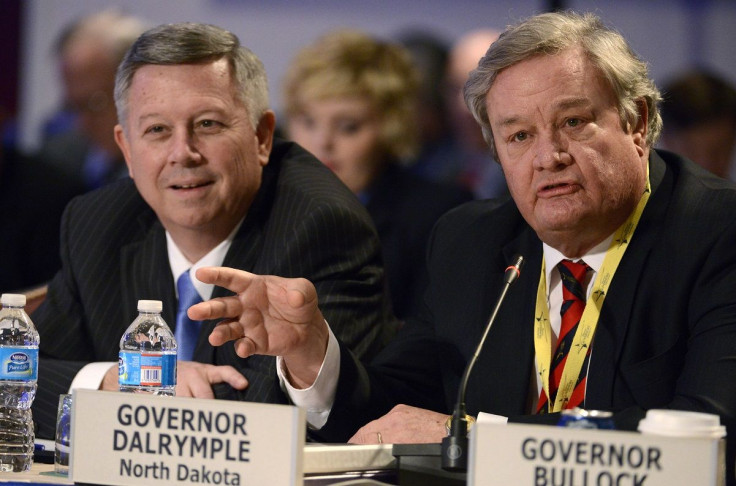North Dakota Gov. Jack Dalrymple Pushes For 'Loose' Energy Policy

Companies in North Dakota are finding innovating ways to capture carbon dioxide, which is blamed for global warming. They are trying to capture the carbon dioxide emitted from coal plants and natural gas flaring, and they want to recycle it to make fuel.
Meanwhile, the Environmental Protection Agency (EPA) is drafting regulations that are due by June 1 for power plants to cut carbon emissions. If the regulations are too lenient, they will not reduce the environmental impact of the carbon dioxide, and if they are too strict, they could force coal plants to shut down before enough alternative power sources can replace them, according to some critics.
That last point has the caught North Dakota Gov. Jack Dalrymple's attention. Dalrymple is a Republican who has spent the past few days peaking with governors, senior officials in the Obama administration, and the president himself about energy policy.
“I like what the president is saying, that he’s open to all forms of energy,” Dalrymple said Monday at the "Energy 2020: States and Businesses Leading Innovation" conference. “But when I hear that coal plants are going to be singled out for special requirements, and perhaps coal is going to see the end of its life, that concerns me. Because you know, we need to allow time for the practical solutions to develop.”
Techniques described as “enhanced oil recovery” pump carbon dioxide into oil wells to retrieve crude oil, leaving the greenhouse gas in the ground instead of polluting the atmosphere. And in North Dakota, the General Electric Company (NYSE: GE) has teamed up with Statoil and Ferus Inc. to capture natural gas flaring out of oil wells and compress it to be used as fuel in trucks and oil rig equipment, executives from the three companies said at the conference.
North Dakotans’ electricity generation from coal is nearly four times the amount it generates from renewables, or about 87 percent of total electricity generation, according to the U.S. Energy Information Administration.
Obama reiterated his “all of the above” policy in his State of the Union address last month, but he focused heavily on the potential for natural gas, much of which is obtained through the controversial drilling method known as hydraulic fracturing.
Colorado Gov. John Hickenlooper, a Democrat who was also in Washington for an annual governors’ meeting, agreed that national energy policy should allow for innovation.
“We’ve got vast areas of natural gas, and that allows us to look at different ways of doing everything,” he said. But he warned: “There’s a lot of misinformation out there.”
The 2010 documentary "Gasland," for example, shows flames leaping out of a water faucet, but this has happened for decades due to errors in water-well drilling and has nothing to do with fracking for gas or oil, Hickenlooper said.
“Energy is a big topic with all the governors, and I think it’s because we do see it has big potential, there’s a big opportunity out there,” he said.
The EPA’s regulations for power plants may allow states to create their own plans to meet the standard, a freedom Dalrymple would applaud. The states want to do a good job, and the EPA should trust the states to do their job without correcting them every day, he said.
For North Dakota, that means producing energy from all kinds of power sources, minimizing pollution and letting the economic picture play out.
“We think that all forms of energy have a future, whether it’s wind, biofuels, nuclear, as well as oil and gas, and yes, even coal,” Dalrymple said. “We think that we need to not make premature decisions about which sources of energy will in the end turn out to be the most cost-effective, the most user-friendly.”
© Copyright IBTimes 2024. All rights reserved.





















